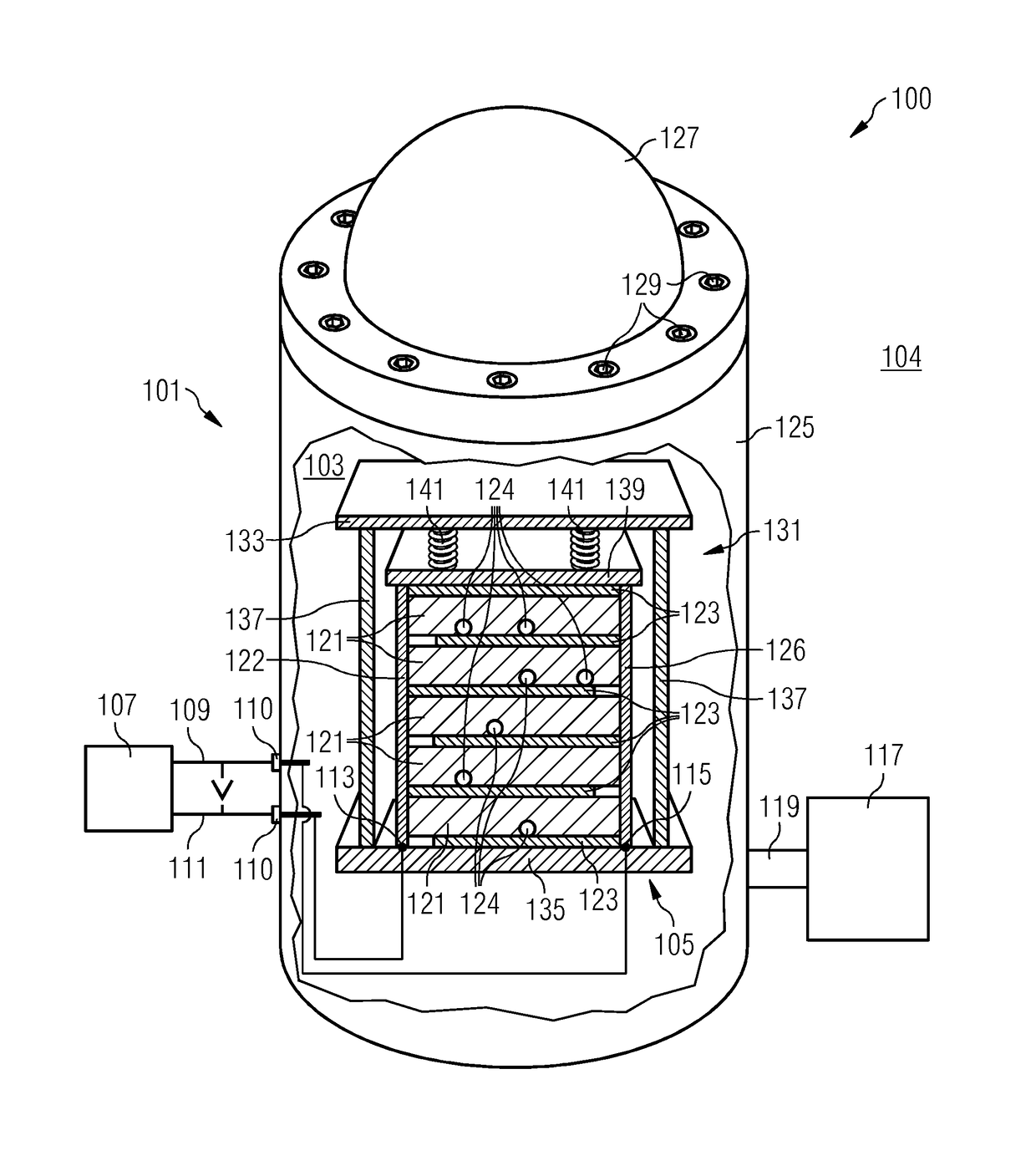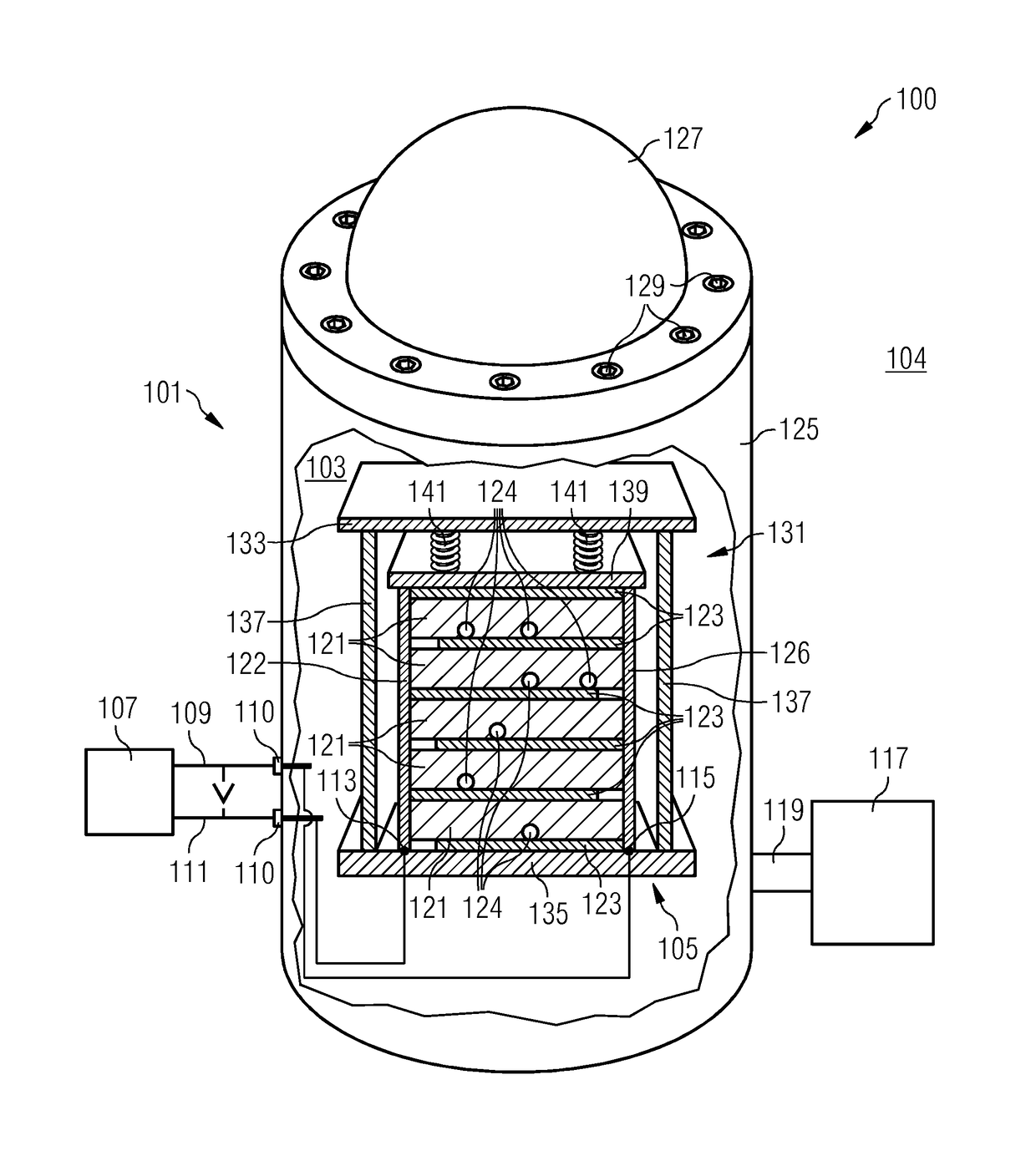Removing faults from a self-healing film capacitor
a self-healing film and capacitor technology, applied in the direction of capacitors, fixed capacitor details, capacitor housing/encapsulation, etc., can solve the problems of affecting the operation, affecting the operation, and affecting the operation, so as to achieve the effect of high pressure-increasing rate and short time constan
- Summary
- Abstract
- Description
- Claims
- Application Information
AI Technical Summary
Benefits of technology
Problems solved by technology
Method used
Image
Examples
Embodiment Construction
[0052]The apparatus 100 in FIG. 1 includes a vessel 101 containing a non-conductive fluid 103. The non-conductive fluid 103 surrounds a capacitor 105 that, in the example shown in FIG. 1, is a self-healing film capacitor. The apparatus 100 further includes a voltage source 107 that is configured to generate a voltage V between first terminal 109 and second terminal 111, and to apply the voltage (e.g., via connectors 110) to a first electrode 113 and a second electrode 115 of the capacitor 105, thereby charging the capacitor 105. The apparatus 100 further includes a pressurizing system 117 that is connected via a port 119 to the interior of the vessel 101 in order to pressurize the non-conductive fluid 103 in the vessel 101 from a start pressure p1 (e.g., when the interior of the vessel 101 is in communication with the air pressure104 outside the vessel) to a target pressure p2. The capacitor 105 includes stacked dielectric layers 121 having metal layers 123 deposited thereon. The me...
PUM
 Login to View More
Login to View More Abstract
Description
Claims
Application Information
 Login to View More
Login to View More - R&D
- Intellectual Property
- Life Sciences
- Materials
- Tech Scout
- Unparalleled Data Quality
- Higher Quality Content
- 60% Fewer Hallucinations
Browse by: Latest US Patents, China's latest patents, Technical Efficacy Thesaurus, Application Domain, Technology Topic, Popular Technical Reports.
© 2025 PatSnap. All rights reserved.Legal|Privacy policy|Modern Slavery Act Transparency Statement|Sitemap|About US| Contact US: help@patsnap.com


